Abstract
Two recent reports described the isolation of derivatives of a Rhizobium trifolii strain that had gained the ability to nodulate Glycine max and Vigna radiata and that had demonstrated altered patterns of carbon source utilization, free-living nitrogen fixation, and hydrogen uptake. More extensive characterization of these strains now supports the conclusion that these strains are R. japonicum and are not derived from the putative parent R. trifolii.
Keywords: host specificity, DNA analysis, carbon source utilization, phage susceptibilities, immunological properties
Full text
PDF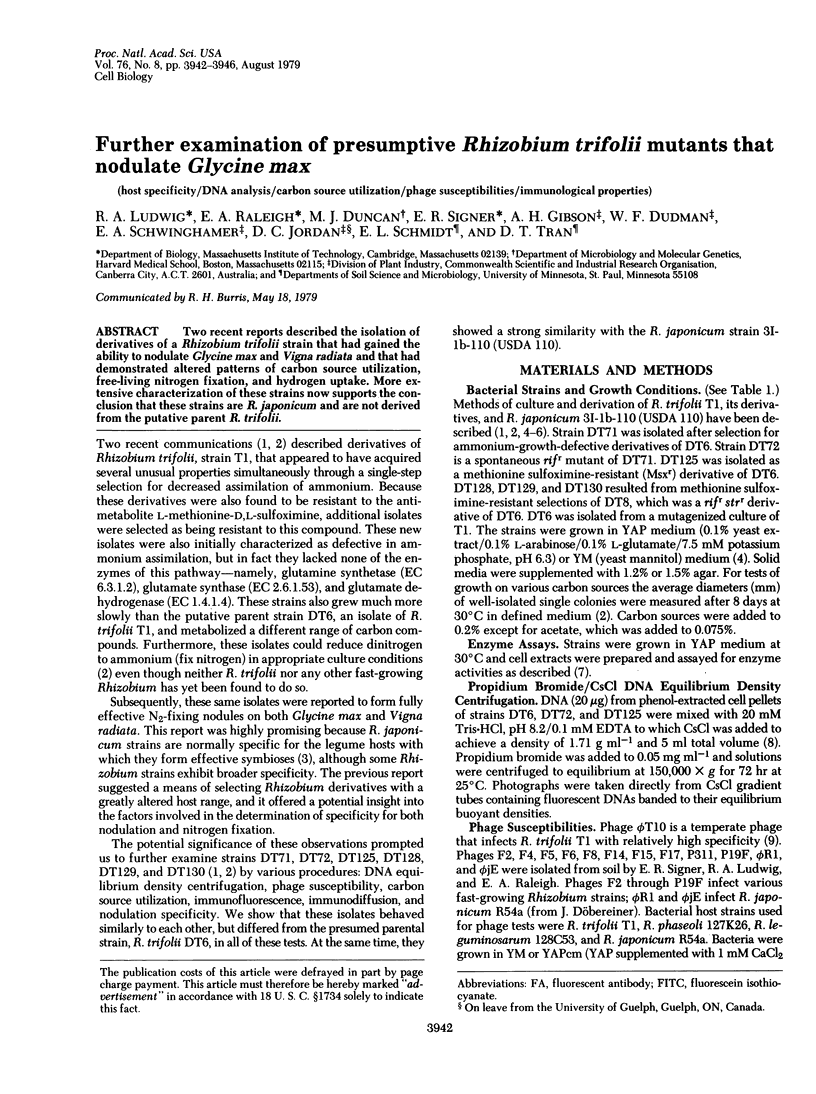
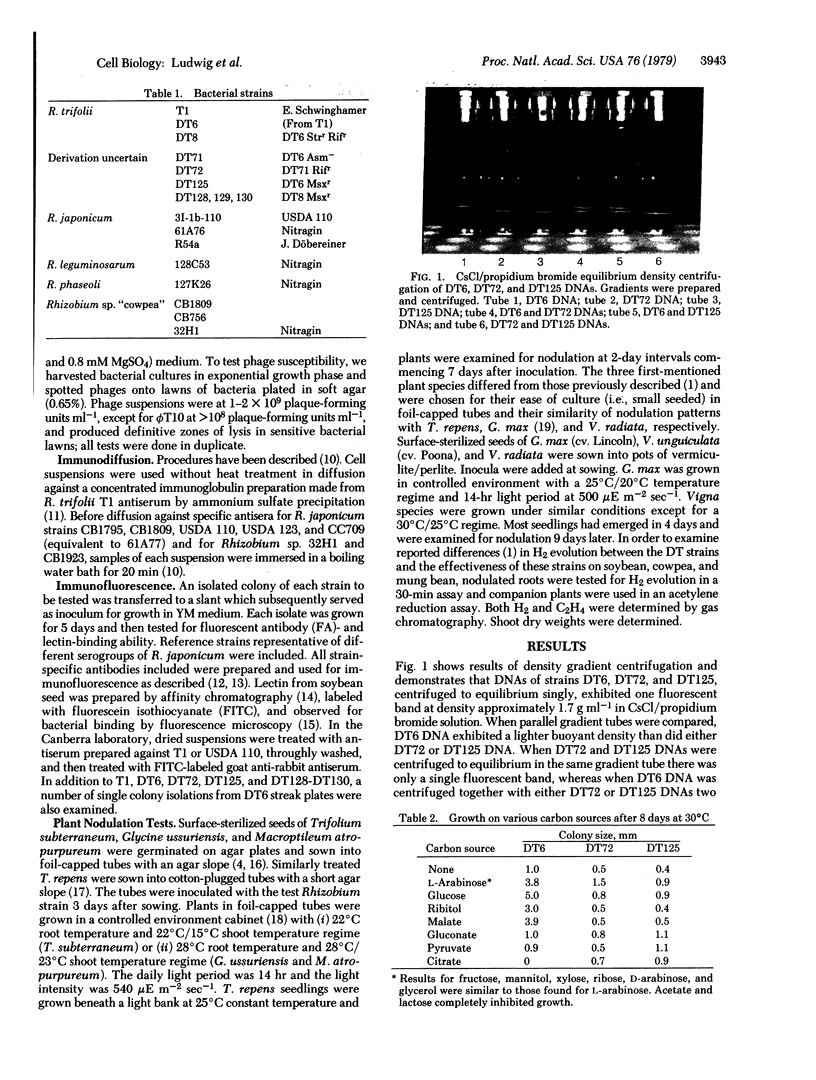
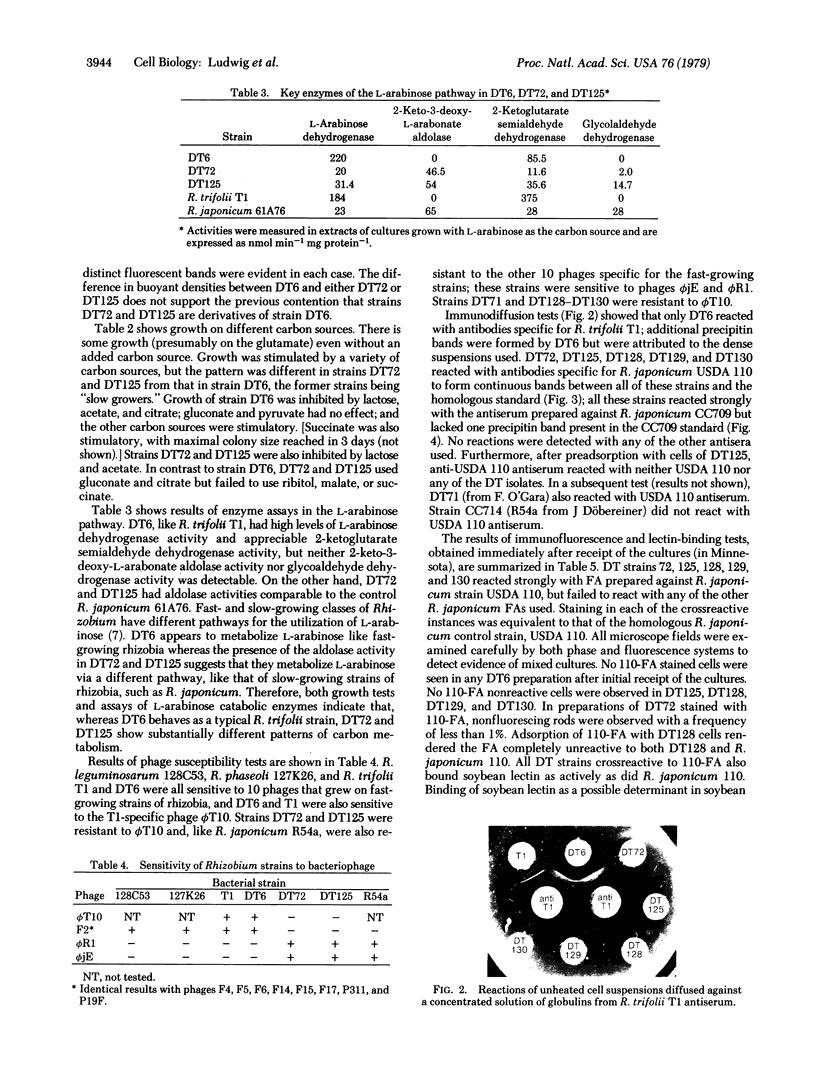
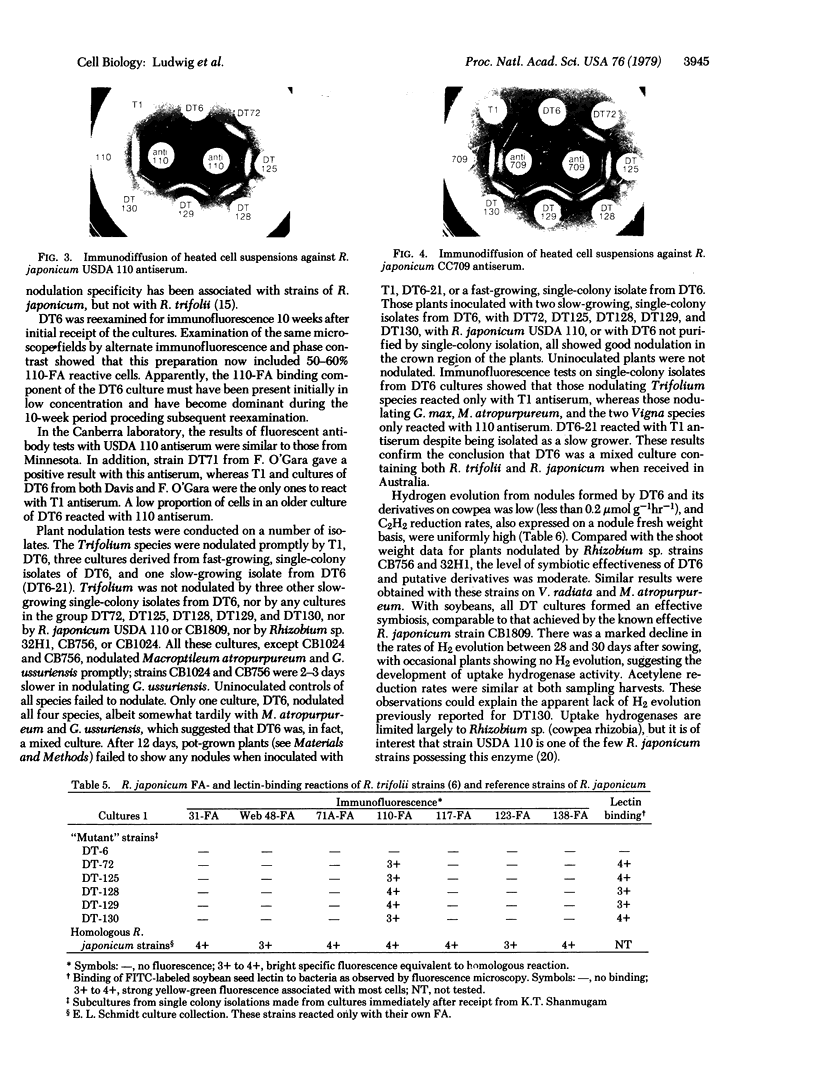
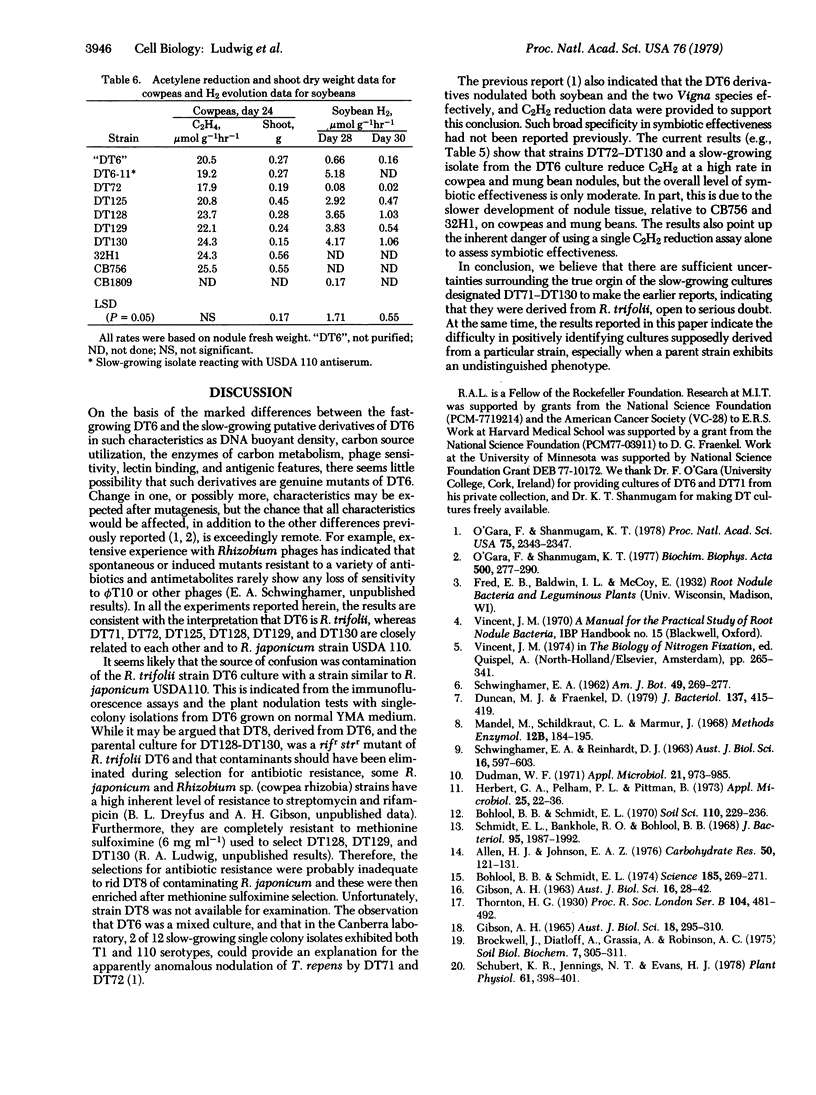
Images in this article
Selected References
These references are in PubMed. This may not be the complete list of references from this article.
- Allen H. J., Johnson E. A. The isolation of lectins on acid-treated agarose. Carbohydr Res. 1976 Aug;50(1):121–131. doi: 10.1016/s0008-6215(00)84089-6. [DOI] [PubMed] [Google Scholar]
- Bohlool B. B., Schmidt E. L. Lectins: a possible basis for specificity in the Rhizobium--legume root nodule symbiosis. Science. 1974 Jul 19;185(4147):269–271. doi: 10.1126/science.185.4147.269. [DOI] [PubMed] [Google Scholar]
- Dudman W. F. Antigenic analysis of Rhizobium japonicum by immunodiffusion. Appl Microbiol. 1971 Jun;21(6):973–985. doi: 10.1128/am.21.6.973-985.1971. [DOI] [PMC free article] [PubMed] [Google Scholar]
- Duncan M. J., Fraenkel D. G. alpha-Ketoglutarate dehydrogenase mutant of Rhizobium meliloti. J Bacteriol. 1979 Jan;137(1):415–419. doi: 10.1128/jb.137.1.415-419.1979. [DOI] [PMC free article] [PubMed] [Google Scholar]
- Hebert G. A., Pelham P. L., Pittman B. Determination of the optimal ammonium sulfate concentration for the fractionation of rabbit, sheep, horse, and goat antisera. Appl Microbiol. 1973 Jan;25(1):26–36. doi: 10.1128/am.25.1.26-36.1973. [DOI] [PMC free article] [PubMed] [Google Scholar]
- O'Gara F., Shanmugam K. T. Regulation of nitrogen fixation in Rhizobium spp. Isolation of mutants of Rhizobium trifolii which induce nitrogenase activity. Biochim Biophys Acta. 1977 Dec 22;500(2):277–290. doi: 10.1016/0304-4165(77)90020-4. [DOI] [PubMed] [Google Scholar]
- O'gara F., Shanmugam K. T. Mutant strains of clover rhizobium (Rhizobium trifolii) that form nodules on soybean (Glycine max). Proc Natl Acad Sci U S A. 1978 May;75(5):2343–2347. doi: 10.1073/pnas.75.5.2343. [DOI] [PMC free article] [PubMed] [Google Scholar]
- Schmidt E. L., Bakole R. O., Bohlool B. B. Fluorescent-antibody approach to study of rhizobia in soil. J Bacteriol. 1968 Jun;95(6):1987–1992. doi: 10.1128/jb.95.6.1987-1992.1968. [DOI] [PMC free article] [PubMed] [Google Scholar]
- Schubert K. R., Jennings N. T., Evans H. J. Hydrogen Reactions of Nodulated Leguminous Plants: II. Effects on Dry Matter Accumulation and Nitrogen Fixation. Plant Physiol. 1978 Mar;61(3):398–401. doi: 10.1104/pp.61.3.398. [DOI] [PMC free article] [PubMed] [Google Scholar]






